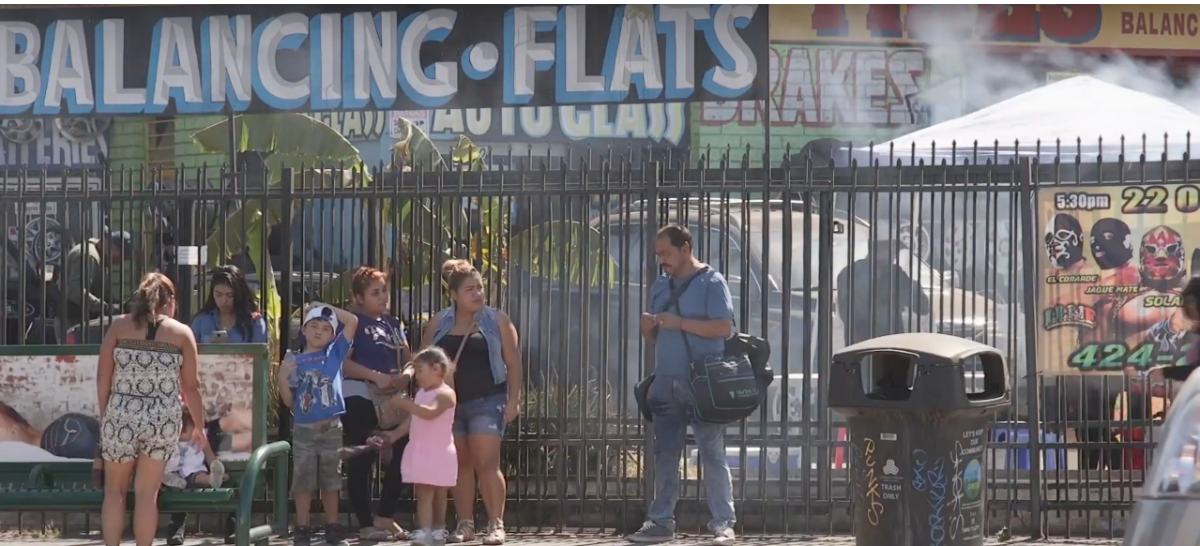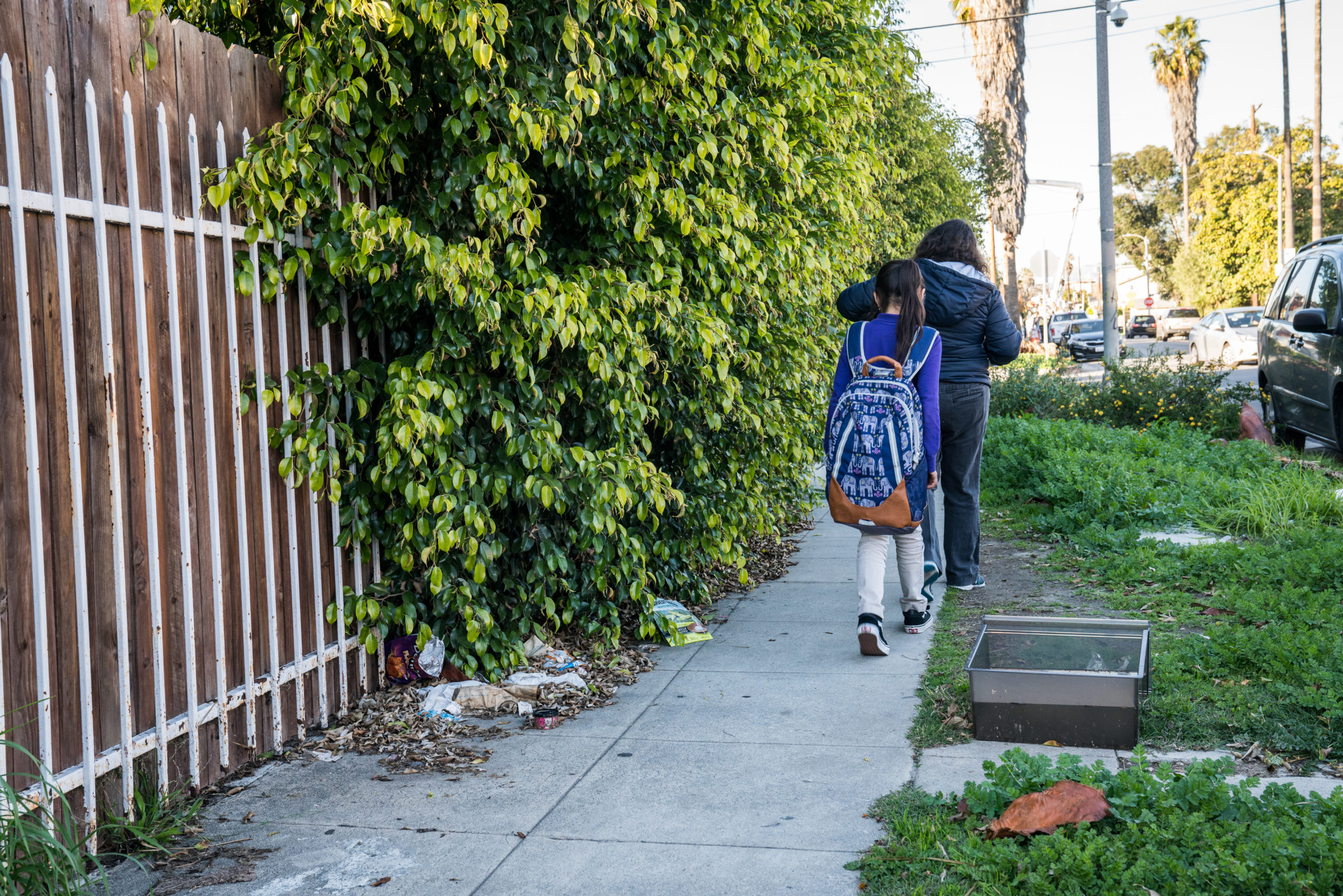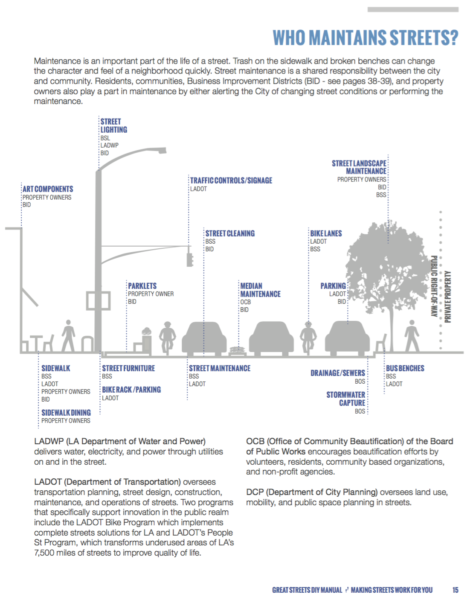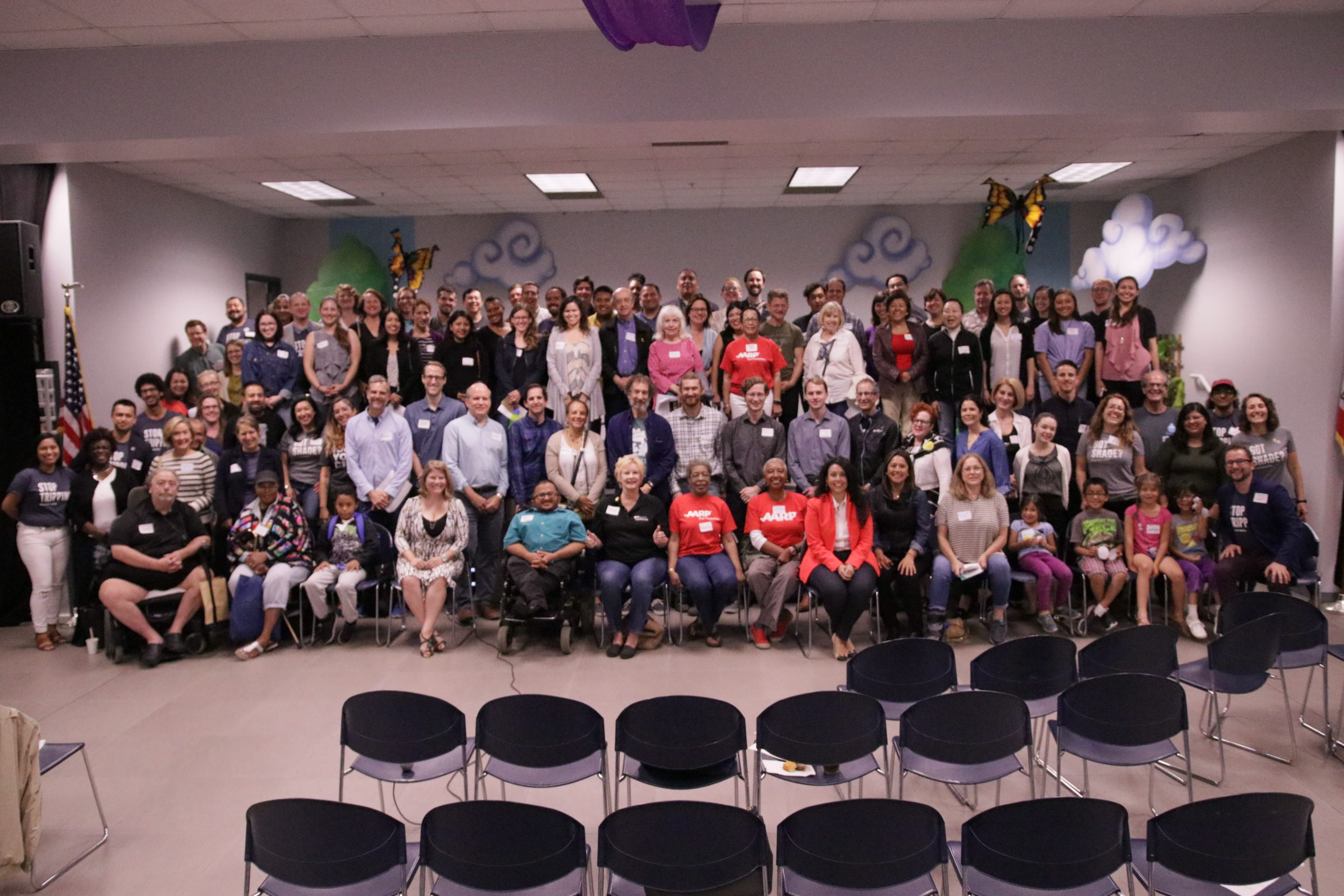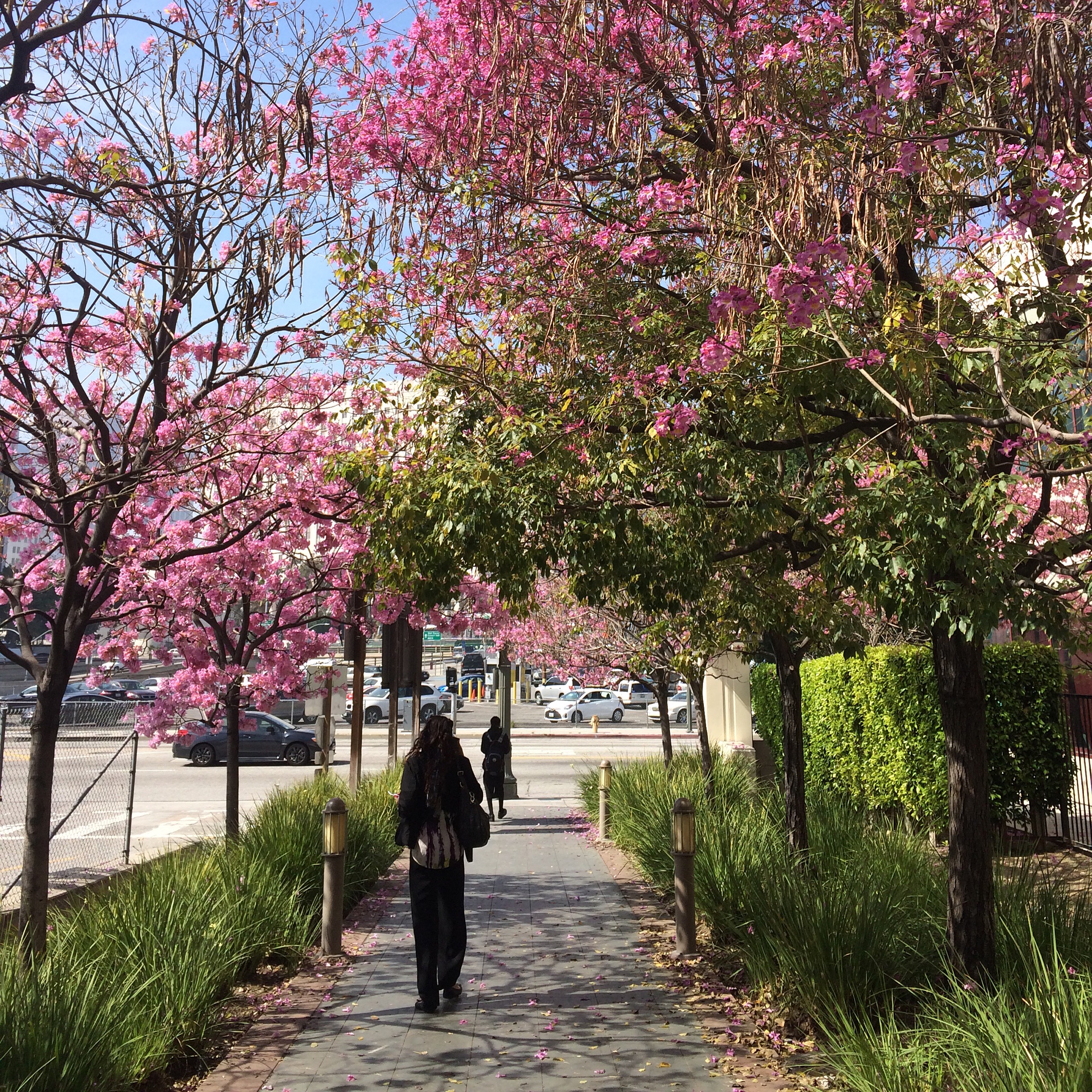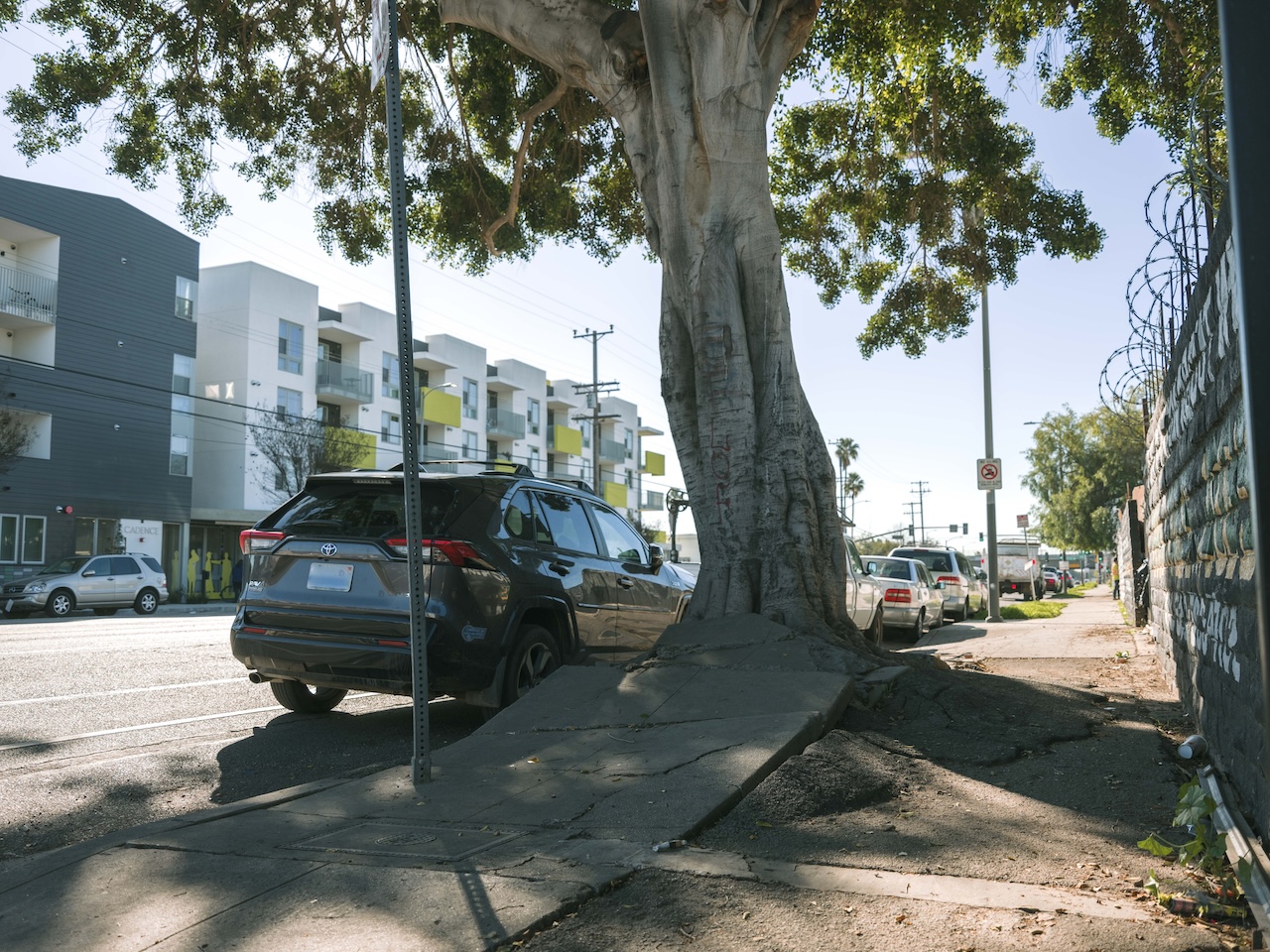As you all may have noticed, LA is getting hotter and hotter. Literally. This is critical as we consider those travelers who are most vulnerable to rising temperatures, such as older adults and children, while they are walking, rolling, and waiting for the bus. However, there are currently challenges to getting more shade in the City of Los Angeles public right-of-way.
On August 27, Investing in Place held a conference call to provide partners updates and explainers on three City of Los Angeles public right-of-way issues:
- Bus Shelters
- #LASidewalks + Urban Tree Canopy
- Potential merger of Bureau of Street Services and Department of Transportation
Bus Shelters
If you want to know the importance of a bus shelter, ask any bus rider what it’s like waiting for the bus. There are currently 1,870 bus shelters installed at Metro bus stops in the City of LA. This covers less than ¼ of all bus stops. There is a 20+ year history of why our bus shelters are so far behind in covering our needs here in sunny LA.
Here is a quick breakdown:
- In 2001, the City of LA contracted with a private advertiser, Outfront / JCDecaux, to build and install bus shelters in exchange for an exclusive 20-year contract to advertise on select street furniture in the public right-of-way. The City, in turn, received bus shelters and other street furniture at minimal cost, a share of the ad revenue, and annual fees from JCDecaux.
- In 2012, the City’s then-Controller, Wendy Greuel, conducted an audit that examined the City’s Street Furniture Program and the contract with Outfront / JCDecaux. In the first 10 years of the contract, JCDecaux implemented 710 total bus shelters (657 new / 53 replacement) compared to the projected delivery of 2,185 bus shelters (1,285 new / 900 replacement). The audit pointed to the Program’s arduous, 16-step approval process, which relies heavily on City Council Office approvals, as a primary contributor for why JCDecaux was unable to install the initial projected number of bus shelters.
- Today in 2018, there are only a few years left on the contract. A renegotiation and possible contract extension to improve delivery of street furniture for the City is currently being considered by City Council. We will provide updates on those contract negotiations as they progress.
Next Steps:
Investing in Place is following the contract negotiations, which are currently in City Council committees, though have not been agendized for discussion in the near future. We are also considering outreach to individual Council Offices to discuss their vision for improved transit amenities in their District, particularly if the Street Furniture Program contract is amended.
#LASidewalks + Urban Tree Canopy
The City of LA has approximately 11,000 miles of sidewalks and estimates put those in need of repair at about 4,600 miles. As part of the largest Americans with Disabilities Act (ADA) mobility settlement in the country, the City of LA has launched a $1.4 billion sidewalk repair program.
This is great news for people walking and rolling on our City’s crosswalks and sidewalks. We want to see access to safe sidewalks coordinated with the retention of mature, lush trees to protect people walking and rolling from extreme urban heat. There is still a great need to discuss how a coordinated effort with shared goals lead to our streets, sidewalks, and crosswalks being safe, cool, and accessible for people using our public space. Many people may not realize this, but 11 separate City agencies are responsible for construction and maintenance in the City of LA public right-of-way. With that many cooks in the kitchen, it is easy to see why navigating our public right-of-way can be such a challenge.
The Sidewalk Repair Program has just completed its first fiscal year and here are some highlights for the Program:
- Repaired 625,500 SF of sidewalk
- Equivalent to approximately 24 miles
- Constructed 671 curb ramps
- Completed 115 Rebate Sites
- Piloted Alternative Materials at 15 sites
- Trees Removed: 460
- Trees Planted: 791
A potential merger of the Bureau of Street Services and the Department of Transportation
Speaking of coordination and shared goals, in May 2018, Councilmembers submitted a Council motion to merge Bureau of Street Services (BSS) with the Department of Transportation (DOT). While these two departments are completely separate agencies with different leadership and oversight, many of their programs overlap. For example, if your car is parked on a street during street sweeping hours: DOT manages the parking restrictions but BSS manages the street sweeper. Similarly, DOT is the agency that designs and sites bike lanes, but BSS manages the crews that actually paint the lane lines in the street.
So how would merging these agencies affect the people of Los Angeles?
Investing in Place has written extensively on this issue:
- How Can we Fix our Right-of-Way, the right way?
- Even Casino Heists Need a Plan
- City of Los Angeles Proposal to merge Bureau of Street Services and Department of Transportation
We believe a citywide Capital Improvement Plan is one solution. A citywide Capital Improvement Plan, or “CIP”, would allow the City to identify projects and budget for years in advance, make the City more competitive to leverage other funds, such as County, State or Federal money. The City would also be able to better anticipate community education and engagement needs with a centralized list of projects. If community members know the proposed changes for their neighborhood in advance, they can more effectively engage with City departments and policymakers.
Next Steps:
Currently the motion is waiting to be heard in two Council committees: Public Works & Gang Reduction and Transportation. We want the City to seriously consider the benefits a CIP would bring and are interested in keeping this conversation going with any interested partners.
